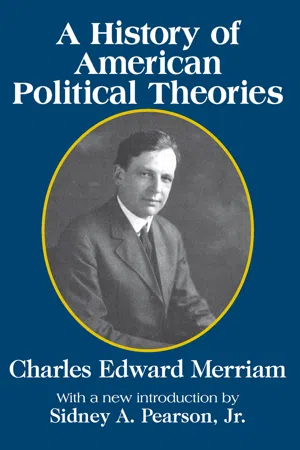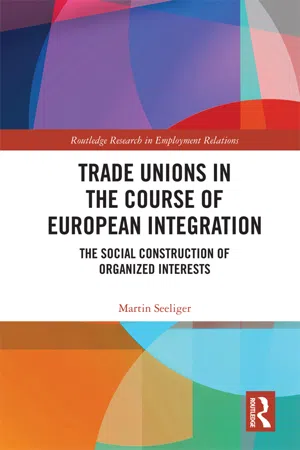History
The Union
The Union refers to the United States of America, specifically the federal government and the collection of states that form the nation. It was established through the ratification of the US Constitution in 1787 and has since served as the central governing authority for the country. The concept of the Union has been central to American history, politics, and identity.
Written by Perlego with AI-assistance
Related key terms
3 Key excerpts on "The Union"
- eBook - ePub
- Olivier Costa, Nathalie Brack(Authors)
- 2018(Publication Date)
- Routledge(Publisher)
A political system forged by history 1The history of social phenomena is always of interest when studying a political system,1 even more so with the EU, whose institutions, competences and geography are continuously changing and where institutional and national balances have largely been determined by a succession of events and crises. Thus, it is important to pay attention to the historic dimension of European integration, to emphasize its incremental nature and manifold inspirations in order to understand, not only the essence of its political system and its institutional architecture but also the division of powers between the national and European levels, the specificities of European decision-making and the difficulties of its legitimation.2 In summary, we need to consider the EU as the result of a Darwinian evolutionary process and not of intelligent design.The many unification projects that have marked the history of the continent from ancient Rome to Denis de Rougemont3 will not be discussed here. Let us simply remind our readers that the idea of a structured European cooperation is very old. Already in 1620, the Duke of Sully imagined ‘a body politic of all European states that could produce a permanent peace and perpetual trade amongst its members’.4 In the nineteenth century, Victor Hugo wrote:However, it is only after the Second World War that the idea of a voluntarily united Europe was translated into concrete achievements.A day will come when we will see these two vast groups, the United States of America and the United States of Europe, located across from each other, reaching out over the sea to exchange their products, their business, their industry.51.1 Motivations for European integration: returning to an old ideaTo understand the institutional architecture of the EU and discussions over its reform and future, we must first review the initial motivations for European integration. Even if this approach may seem trivial, it allows us to understand both the EU’s current operational difficulties as well as the problem of its legitimation. - eBook - ePub
- Charles Merriam(Author)
- 2017(Publication Date)
- Routledge(Publisher)
1In this discussion, however, there is no claim that the individual states are sovereign. The issue is one as to how the national sovereignty is organized, whether it rests with the people of the whole nation, or with an association or group of states. The whole controversy really arises from a failure to distinguish clearly between the legal and the political side of sovereignty — a lesson which the events of the Civil War might have made clear.2The new view of The Union differed in another respect from that of Webster, namely, in regard to the genesis of the United States. Webster thought of The Union as formed, in accordance with the political philosophy of the Revolutionary era, by means of a social contract between individuals. In the new national school, the tendency was to disregard the doctrine of the social contract, and to emphasize strongly the instinctive forces whose action and interaction produces a state. This distinction was developed by Lieber, who held that the great difference between “people” and “nation” lies in the fact that the latter possesses organic unity. “People” signifies merely “the aggregate of the inhabitants of a territory without any additional idea, at least favorable idea.” “Nation,” on the other hand, implies a homogeneous population, inhabiting a coherent territory; a population having a common language, literature, institutions, and “an organic unity with one another, as well as being conscious of a common destiny.”1 In general, the new school thought of The Union as organic rather than contractual in nature. Though not in all cases clearly expressed, it was evident, nevertheless, that the contract philosophy was in general disrepute, and that the overwhelming tendency was to look upon the nation as an organic product, the result of an evolutionary process.2 It would, of course, be a gross exaggeration to say that all those who maintained the supremacy of The Union repudiated the social-contract theory, but it is necessary to recognize the fact that the nation was something different in the popular mind and in the philosophic mind from the “people “of earlier days. Nation carried with it the idea of an ethnic and geographic unity, constituted without the consent of any one in particular; “people “was understood to be a body formed by a contract between certain individuals. The very fact that The Union was “pinned together with bayonets “was enough to show that the doctrine of voluntary contract had faded into the background. The general idea was that the United States, by virtue of the community of race, interests, and geographical location, ought to be - eBook - ePub
Trade Unions in the Course of European Integration
The Social Construction of Organized Interests
- Martin Seeliger(Author)
- 2019(Publication Date)
- Routledge(Publisher)
Chapter 6 ) already contains a separate chapter on their political importance for the unification of Europe. In his analysis of the national trade union federations in the six member countries of the European Coal and Steel Community, Haas compares the political attitudes of the trade unions with the imminent integration of the continent. A further important monograph on the subject was presented a short time later by Colin Beever (1960), in which he examined the possible importance of national trade union organizations in the shaping of a European social policy. Historical accounts such as that of Abendroth (1965) attempt to identify general dynamics of European class formation by means of a longitudinal study. International activity and the corresponding reflectivity, finally, are themselves reflected in a series of contributions by the trade unions themselves (see Becker, Jentsch and Wald, 2007). In a speech, the then-chairman of IG-Metall, Otto Brenner, who in May 1960 was elected General Secretary of the International Metalworkers’ Federation, stresses the “importance of global economic issues for a trade union” (ibid., 200f.).Examples of the involvement of national trade unions in shaping European integration are their participation in the negotiations surrounding the Schuman Plan (Suzuki, 2009) and the Montanunion (Bühlbäcker, 2009). The European Economic Community (EEC) was created in 1958, but it was only complemented 15 years later by a comprehensive trade union organization, with the founding of the ETUC in 1973 (Buschak, 2003).The founding of the ETUC marked the beginning of a second phase of European trade union politics and research (Mittag, 2009). After capital had founded two European umbrella organizations— Employers’ Confederation of Europe for private industry and European Centre of Employers and Enterprises for public companies—on February 1, 1973, in connection with the expansion of the EEC to include Great Britain, Denmark, and Ireland, 167 trade unions from 15 western European countries joined the collective organization. With the rounds of expansion of the EEC, the size of the ETUC and the European sectoral organizations also grew up until the 1990s (see Section 6.2
Index pages curate the most relevant extracts from our library of academic textbooks. They’ve been created using an in-house natural language model (NLM), each adding context and meaning to key research topics.


